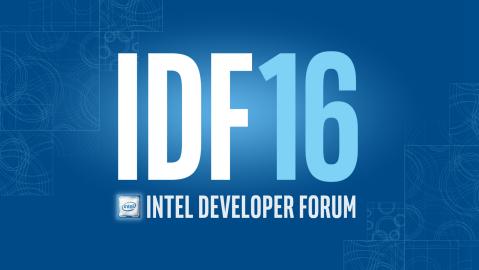From virtual reality to artificial
intelligence to 5G and beyond – this week’s Intel Developer Forum
showcases technology innovation with the power to transform lives like
never before. We are seeing greater opportunities for – and the
results of – developers engaged in exciting new levels of industry
cross-collaboration.
Today, Intel executives Murthy Renduchintala and Diane Bryant share
more developments in technologies and trends that will shape our
smarter, more connected future.
WHAT YOU NEED TO KNOW
Artificial Intelligence Gets a Boost: We are clearly in the age of
data. When, by 2020, we begin connecting the more than 50 billion
machines and devices out there we will see the amount of data
generated increase by orders of magnitude beyond what we experience
today. In fact, connected cars will generate 4 terabytes per day and a
connected factory can create more than 1 petabyte per day. For
perspective, an MP3 player with one pet byte of songs would play
continuously for 2,000 years1.
However, data by itself has limited value. When we apply advanced
analytics to empower machines with human-like intelligence, we can
effect real change. This is where artificial intelligence becomes
really exciting. Whether it’s a highly personalized treatment plan for
a cancer patient or improved crop yields for feeding the world,
gaining deeper insights from this complex data is the key to unlocking
more value for businesses and societies.
To help make this a reality, Intel disclosed the next generation of
the Intel Xeon Phi processor family (code named Knights Mill), which
is focused on high-performance machine learning and artificial
intelligence. Knights Mill, expected to be available in 2017, is
optimized for scale-out analytics implementations, and will include
key enhancements for deep learning training. For today’s machine
learning applications, the large memory size of the Intel Xeon Phi
processor family helps customers like Baidu make it easier to train
their models efficiently.
Of course moving all of this data in and among data centers will be
critical. Intel announced that its first Intel® Silicon Photonics 100G
optical transceivers are now commercially available. This critical
advancement allows enterprises and cloud service providers to use the
power of light to move large amounts of information at 100
gigabit-per-second over distances of up to several kilometers over
fiber-optic links.
Silicon Photonics is a combination of two of the most important
inventions of the 20th century: the silicon integrated circuit and the
semiconductor laser. With this combination, light has been integrated
onto Intel’s silicon platform. It takes advantage of the bandwidth and
reach of optical connectivity on the scale and technology capability
of silicon. Check out the Intel Lights up Silicon blog for more
details.
5G Will Be Foundational: Three factors will characterize the evolution
of technology required for a truly smart and connected world.
First, computing will be everywhere and in everything. More than 50
billion things and devices are expected to be connected by 2020, in
addition to more than 200 billion connected sensors – all generating
massive volumes of data.
The second factor shaping the future of technology – compute,
analytics and storage capabilities distributed into the fabric of the
network – turns connected things and data into meaningful insight for
making faster, better informed decisions much closer to the edge
device. For instance, in just milliseconds two autonomous vehicles
will be able to sense a collision and communicate directly with each
other to prevent an accident. First responders will use data and
insight from the sensors embedded in their uniforms and in the
environment around them to fight fires more efficiently and help save
more lives.
Pervasive connectivity between the things, through the network and to
the cloud is the third factor shaping the future of technology. Intel
is laying the groundwork for a smarter and more connected world with
5G technologies. 5G is the next generation wireless network built to
unleash the potential of the billions of things and devices and the
data they will generate for amazing new experiences. 5G connectivity
will be foundational to linking everything that is around us and
continually feed the virtuous cycle of growth for the industry.
To build this foundation we need faster, more efficient and
intelligent networks. Intel is uniquely positioned to power 5G
end-to-end with solutions from the device to the network and cloud, as
well as to enable meaningful collaboration with cross-industry leaders
– from device manufacturers to equipment makers to network operators.
AT&T Chief Strategy Officer John Donovan took the IDF stage to discuss
the transformation of the network and services delivery and the
importance of long-term planning, early technology enabling, deep
architectural collaboration, validation and optimizations. To get
there, AT&T is already using server, cloud and virtualization
technologies to more quickly and cost-efficiently deliver more value
to its customers. Through an expanded collaboration with Intel, AT&T
will continue to accelerate its development, deployment and
monetization of new services in the cloud and throughout its
infrastructure, laying the foundation for delivering cutting-edge
capabilities. This is a great example of the type of collaborative
approach Intel and the industry will need to help create a 5G-enabled
world.
The interconnectedness of the three factors will be the game changer
in the next era of computing. It is not only already reshaping how we,
as an industry, design, develop and build – but also how we partner
and with whom. It is a true illustration of the idea that the future
is what we make together.





